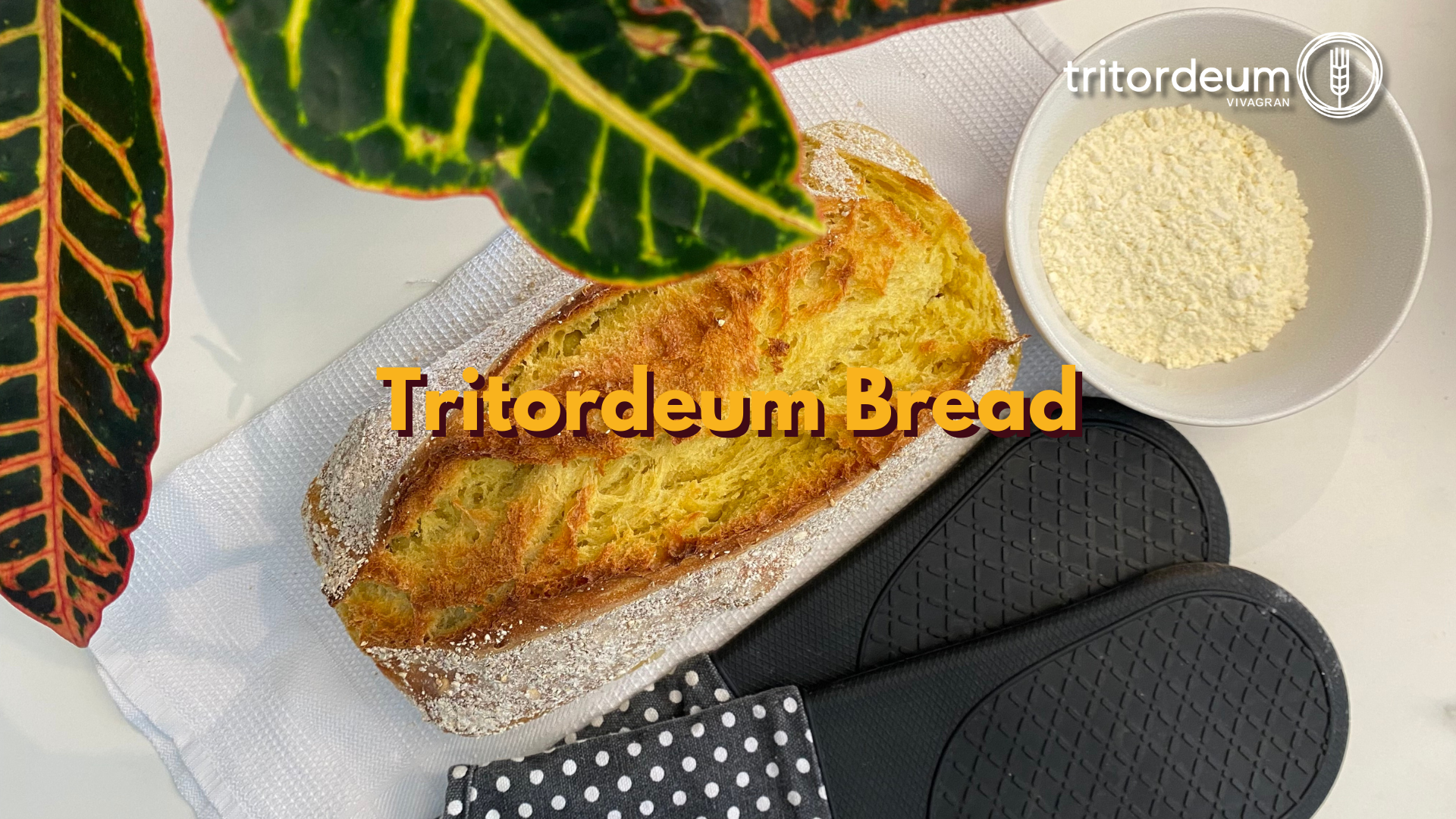
Baking



Baking
Baking Technology
Tritordeum as an alternative to wheat
Savory Products
- Bread
- Pizza-Focaccia
- Crackers-Snacks
Sweet Products
- Brioche
- Croissant
- Biscuit-Cake
Online Baking Tutorials










Tritordeum bread recipe
Refined Flour
- Ash content from 0,7-0,9%
- W from 70-140 and P/L from 0,3-0,6
- Protein content superior to 12,5%
- Golden yellow color and dairy-like smell
Wholegrain Flour
- Ash content from 1,2-1,5%
- W from 70-140 and P/L from 0,2-0,4
- Protein content superior to 13,5%
- Dark amber color and honey smell
Tritordeum can be baked at 100%
Tritordeum flour is bakeable at 100%. When following our recommendations in the process steps, there is no need to add wheat flour or other ingredients to obtain a good baked bread.
A basic Tritordeum bread recipe is:
Dough Hydration
Tritordeum flour has a very good water uptake capacity, and therefore it is recommended to work with water ratio of 70% minimum on flour base. Depending on the final water content of the recipe and the desired crumb structure, an autolysis (resting of flour and water) is highly recommended for levels of water above 75%, to ensure proper hydration of starch, and shorten the kneading time.
Yeast vs. Sourdough
The use of yeast in the recipe is similar to a wheat based product. Other recipe options are possible, like the use of natural sourdough (fermented flour culture) up to 30% on a flour basis, which contributes to better absorption of water in the dough, or the use of a "poolish" base (mixture of flour, water and yeast), at up to 40% on a flour basis, with the same effect as sourdough.

Other ingredients:
Addition of other ingredients in the basic recipe is possible.
For instance: sugar, oil or fat, seeds, but also other Tritordeum-based ingredients such as malt flour, toasted flour,...
The % of incorporation will depend on the desired baked bread profile.
Kneading
It has to be short, and with low intensity (usually in first gear). The final dough temperature has to be below 24ºC to have time tolerance in the posterior proofing step, especially with lower weight pieces (below 350gr). For baguettes it is recommended to have a dough temperature of 22ºC, and for loaves, 24ºC is acceptable.
The dough has to present a homogenous consistency, with a smooth/shiny surface, and good gluten network development - usually tested by extending a small dough piece, trying to form a film.
Bulk Resting
A bulk rest of the dough is highly recommended to further strengthen the dough, reduce stickiness, develop a better opened-crumb structure and, in cold long bulk-rest processes, develop a more intense flavor and taste. Stretching and folding of the dough during the bulk rest will be beneficial for loaf formats.
Fermentation
The second fermentation time has to be very short in comparison with a similar wheat-based format. The ideal proofing conditions are below 28ºC, as otherwise the strong natural enzymatic activity of tritordeum will degrade the gluten network very rapidly.
For a baguette format, the resting time in shaped pieces has to be less than 15min, and for loaves up to 45min. The dough will gain a maximum of 50% volume between the end of mixing and the moment it goes in the oven.
Baking
Baking of tritordeum is similar to any other baked product and depends on format and unit weight. For baguettes, enter the dough at 250ºC, and reduce to 230ºC after 10min. Baking time is usually below 30min. For loaves, enter at 230ºC with a baking time around 40min for 500gr dough pieces.
Tritordeum flour correction (for industrial process):
As a new species of cereal, tritordeum has its own unique nutritional composition, and to optimize its performance in industrial baking processes, it requires a specific set of correctors to solve the typical dough handling problems encountered.
The recommendation is to combine an antioxidant agent such as ascorbic acid at a dosage of 5-10gr/100Kg, with a “cocktail” of enzymes acting to modify the 4 main groups of nutrients: starch, protein, fiber and lipid.
A gluco-amylase will provide dryer dough and soft, yet chewy crumb structure.
A phospho-lipase will act as an emulsifier giving more tolerance to dough during kneading, and improve final bread volume.
A xylanase will provide second proofing stability and better dough strength.
A glucose-oxidase may improve further the dough handling in case of higher water content in the recipe.
The adaptation of the baking process at industrial scale should follow the same indications as in a craft process: a shorter/less intense kneading stage, a bulk rest when possible, a shorter second fermentation time.
Whether the production line is extrusion or lamination, tritordeum can be handled when the proper recipe and flour correctors are used.

















